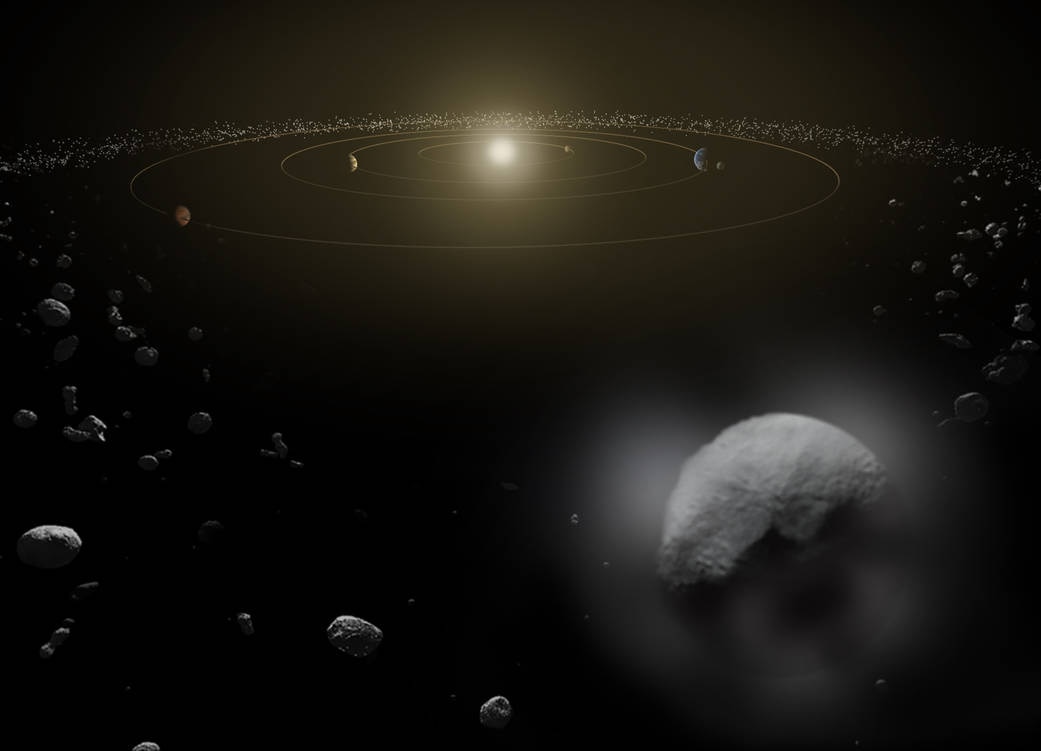Create a free profile to get unlimited access to exclusive videos, sweepstakes, and more!
Asteroids almost kept Earth from having an atmosphere
Asteroid impacts almost made Earth an inhospitable planet; impact vapors stripped oxygen from the atmosphere.

The most infamous asteroid ever might be the one that annihilated the dinosaurs, but asteroids almost wrecked the planet ages before that.
Some 2.5 to 4 billion years ago, before a dinosaur ever trampled the Earth, asteroid impacts almost made Earth an inhospitable planet. They released vapors that stripped oxygen from the atmosphere when they struck the surface. Earth didn’t have anything close to the oxygen it has now, so this was detrimental for life. The larger the asteroid (think over 6 miles in diameter), the more chemical vapors it unleashed, and you can see where this is going.
Peering back in time involved analyzing ancient physical evidence. Researcher Simone Marchi of the Southwest Research Institute, who co-authored a study recently published in Nature Geoscience, had to analyze tiny particles of rock that were once molten droplets that resulted from plumes of material kicked up by asteroid impacts. Impacts were hot enough to melt rock. Once the droplets condensed and hardened to resemble sand, they fell back to Earth.
“In these reactions, oxygen is typically consumed by iron, silicon, and carbon species in asteroid materials,” Marchi told SYFY WIRE. “We know that meteorites are chemically very reactive with oxygen, so they would have made early Earth a sink of atmospheric oxygen.”
At the dawn of the Arachean Eon, which would be the era when these bombardments kept hitting, Earth existed in a haze of atmospheric methane. Humans and many other life-forms would have never been able to survive because of the lack of oxygen. Cyanobacteria (blue-green algae) are thought to have come into being around 2.7 billion years ago. These photosynthetic organisms started to produce oxygen from water, CO2, and sunlight that was readily available, which is why they could potentially help produce clean rocket fuel on Mars.
As cyanobacteria produced oxygen, Earth’s atmosphere reached oxygen levels of 21%, which is about one percent of what we have today. Meteorites that have previously been studied came from many different types of asteroids capable of de-oxygenating Earth — there was not just one chemical composition that marked the culprits. The beating our planet received is known as late heavy bombardment. Whatever asteroids did fall from space, they are thought to have put the brakes on oxygen accumulating in the atmosphere and staying there.
These rocks really took advantage of Earth’s much lower oxygen content. The vapors that arose from them were easily capable of eating up oxygen, even when it temporarily fought back and replenished itself. Many remnants that broke off from these asteroids before they smashed into Earth, the Moon, and other planets and moons in the solar system can be found wandering around in the Kuiper belt today. Marchi thinks it is possible that they were originally leftovers from the solar system’s formation that were still violently flinging themselves at other objects.
“In our bombardment model, we make a distinction between asteroids (meaning objects that are on starting orbits between Mars and Jupiter, but that eventually can collide with the Earth due to dynamical perturbations), and leftover planetesimals,” he said.
Planetesimals can be thought of as failed planets. These massive space rocks would have been whizzing between Mercury, Venus, Earth and Mars during the Archaean eon, punching anything that got in their way. As more of them collided with planets and moons, more got destroyed, so the terrestrial planets in the solar system had a chance to breathe. The asteroids had not managed to break our planet and its potential for spawning life. Earth would eventually experience a shift in surface chemistry that brought on the Great Oxidation event.
So much oxygen would eventually be produced that even larger asteroids would have been unable to get rid of it with their vapors. Before this event, there was a lack of ozone (O3), something Marchi and his team found out from investigating sedimentary rock samples containing isotopes of sulfur. Ozone is Earth’s sunblock, so low levels meant low levels of atmospheric oxygen (O2) in the atmosphere and near the surface. What actually set off the chemical changes that would forever change the atmosphere of our planet is unknown.
“In general, the concentration of atmospheric oxygen is the result of sources and sinks,” said Marchi. “The thinking is that oxygen could not accumulate in a significant concentration due to the predominance of sinks. Impactor materials would have been an important oxygen sink for the early Earth.”


























